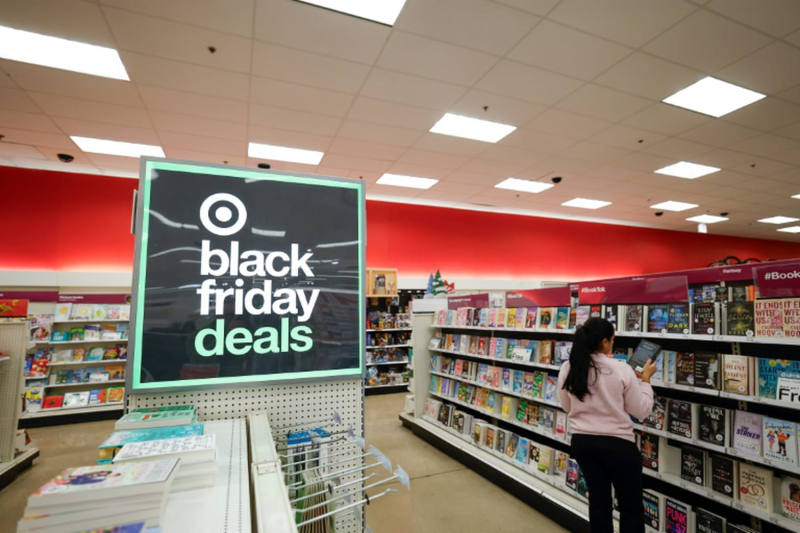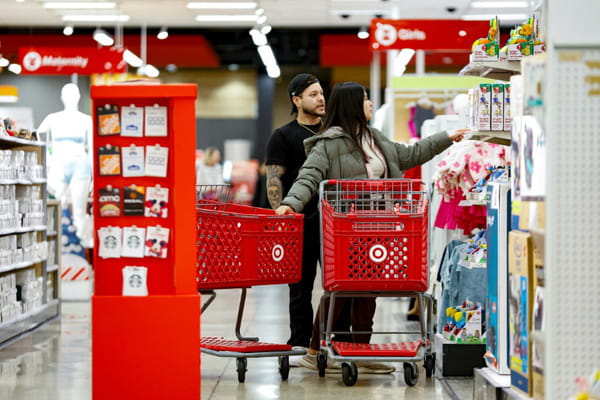The day after Thanksgiving and its turkey, the day Black Friday promotions are always eagerly awaited by consumers in the United States, but this year they should be more careful than usually before taking out their bank card. They are “even more concerned and focused on price and discounts” than in previous years, says Vivek Pandya, principal analyst at Adobe Digital Insights. Inflation, which spiked immediately after the Covid-19 pandemic but has slowly slowed, has taken a toll on their purchasing power. And even if the inflation rate has returned to an acceptable level, prices, on the other hand, are not going to come back down. They are now more than 20% higher on average than those of January 2020. Consumers are therefore hunting for bargains and some brands such as the large Target stores have, in recent years, started their “Black Friday” promotions as early as October. “We are seeing greater price sensitivity from consumers and they are very responsive to promotions and event-related offers,” adds Vivek Pandya. Black Friday, the day following Thanksgiving Thursday, traditionally kicks off the holiday shopping season in the United States. It also marks the start of a long weekend of sales, with “Small Business Saturday” and “Cyber Monday”. – “Tight” budget – American households' dissatisfaction with inflation is one of the reasons for Donald Trump's victory in the November 5 election. A Target store in Chicago, November 26, 2024 © AFP – KAMIL KRZACZYNSKI And retailers have also had to adapt to this anger. Thus, Target organizes a week of promotions every quarter that attracts consumers. But, the group's executives explained, purchases are lower the week before and the week after. After a long period of inflation, “consumers are telling us their budgets remain tight,” Target CEO Brian Cornell told analysts earlier this month. “They're becoming more inventive in their shopping behaviors, waiting until the last minute to buy, focusing on deals and stocking up when they find them,” he said. Gasoline prices, however, have fallen, as have some food prices, economists say, providing a welcome boost to household wallets. The National Retail Federation (NRF) is forecasting year-end spending to grow between 2.5 percent and 3.5 percent from a year ago, to $989 billion over the two years. month. – More competitive online sales – Households with the lowest incomes have been hit hardest by the inflation episode, but that appears to be changing. “For the first time since maybe 2021,” when inflation started to rise, “it looks like their real incomes are finally increasing,” Burlington Stores CEO Michael O'Sullivan said on a conference call this week. Some of the chain's strongest sales have been at stores in lower-income areas, O'Sullivan said. “Over the course of this year, what we've seen is that as their real incomes have stabilized and started to rise, (those consumers) have spent more,” O'Sullivan added. responsible. And for online sales, the holiday season got off to a flying start, with a 9.6% jump in the first 24 days of the season, compared with an 8.4% growth forecast for the season as a whole, Adobe Digital Insights said Wednesday. That could be because the holiday season started later this year, with Thanksgiving falling at the very end of November. But more importantly, it reflects how the competitiveness of online products is driving down prices, according to Vivek Pandya. Indeed, the inflation rate for all consumer goods remains above 2%, but Adobe estimates that prices of goods sold online actually fell 2.9% year-on-year in October. All reproduction and representation rights reserved. © (2024) Agence France-Presse


